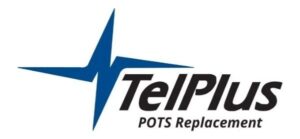How To Audit Your Property For POTS Lines

Table of Contents
The copper network that once powered nearly every building’s phone and emergency systems is becoming extinct. As telecom providers retire copper analog POTS lines, building owners, facility managers, and property operators must take action to avoid service interruptions and costly surprises. The first step? Conduct a thorough audit of your property to identify which systems still depend on analog connections.
Performing a POTS line audit helps you understand your current risk exposure and allows our team to help plan a compliant, cost-effective transition to a cellular solution, like Ooma AirDial.
Why You Need to Audit for POTS Lines Now
Delaying POTS line replacement increases both cost and risk. With the FCC’s Forbearance Order 19-72A1 in place, major carriers are no longer required to maintain copper infrastructure. As a result, analog service is being phased out, leaving many systems vulnerable to sudden disconnection and a lack of service.
Maintaining copper lines today often means higher monthly service charges, reduced reliability, and limited support. Worse, many businesses are unaware of how many essential systems, particularly life-safety and building access features, still depend on these lines.
Where POTS Lines Are Commonly Found
Although voice and internet services have moved to digital platforms, many critical systems remain tied to analog lines. These connections are often overlooked because they operate quietly in the background until a failure occurs. All these systems below can function on a cellular, POTS Replacement connection.
Common POTS-dependent systems include:
Step-by-Step Guide to Auditing Your Property for POTS Lines
Conducting a thorough audit of your POTS infrastructure involves more than scanning a bill. It requires walking your property, examining hardware, reviewing service records, and documenting how systems are connected. Below is a detailed process for identifying and preparing to replace all copper-reliant lines.
1. Review Your Telecom Invoices
Start by gathering your recent phone and telecom bills. Look for any recurring charges associated with terms like “business line,” “analog line,” “single-line service,” or “POTS.” These entries typically refer to copper phone lines. Pay attention to lines that aren’t tied to desktop phones – these are often routed to alarms, intercoms, or elevator systems.
2. Create a Preliminary Line Inventory
Using the billing information as a foundation, begin listing each active line, its assigned address, and the estimated monthly cost. This will help you track which lines need further investigation and which may be candidates for immediate replacement.
3. Walk the Property with Facility Staff or Engineers
Tour the building (or buildings) alongside your maintenance or IT personnel. Identify all systems that interface with phone lines: fire panels, elevator control rooms, security offices, gate call boxes, utility rooms, and common area emergency phones. Look for devices connected by standard RJ11 phone jacks, old telecom wall plates, or interface panels linked to legacy providers.
4. Verify the Connection Type at the Device Level
Not all legacy devices are obvious. Even newer-looking systems may be routing signals through analog conversions. Open control cabinets and look for line splitters, copper distribution blocks, or devices with dial-up modems. In some cases, a system that appears modern could still rely on a behind-the-scenes POTS line.
5. Contact Vendors for System-Specific Information
If you use third-party providers for fire monitoring, elevator service, or access control, reach out to confirm how those systems communicate. Ask directly if the system is still using an analog line for signaling. Many vendors can provide documentation or test results that verify current line usage.
6. Document Each System and Line
Create a centralized spreadsheet or digital log that includes:
The system type (e.g., elevator phone, fire alarm)
Physical location
Line number or telecom circuit ID
Monthly cost
Risk level (e.g., life-safety, access control, back office)
Current service provider
This document will serve as the foundation for your replacement plan.
7. Identify and Prioritize Mission-Critical Systems
Any system related to life safety or building code compliance, such as fire panels, elevator phones, and emergency call boxes, should be flagged for priority replacement. Delays in upgrading these systems can result in non-compliance penalties, legal risk, or failure during emergencies.
8. Consult with a POTS Replacement Specialist
Once the audit is complete, engage a trusted POTS replacement provider to validate your findings, map out replacement solutions, and coordinate a phased transition. Working with experienced professionals ensures no system is overlooked and minimizes disruption during the changeover.
Once you’ve completed your audit and identified every copper-connected system on your property, we will help you create a phased migration plan.
Why Choose Ooma AirDial For POTS Replacement
Ooma AirDial is a managed POTS replacement device replicating analog line functionality over a secure, wireless network. It is purpose-built for compatibility with legacy hardware, allowing you to keep existing systems while upgrading the connection behind them.
Key advantages of AirDial include:
Cellular connectivity that eliminates dependence on copper lines
Up to 8 hours of battery backup for power continuity
Support for fire panels, elevators, intercoms, fax machines, and more
Remote monitoring and real-time alerts
Compliance with UL, NFPA 72, HIPAA, and ASME A17.1B
Simple installation with no rewiring required
Begin the Transition Now – Before It’s Too Late
As telecom providers move quickly to retire copper infrastructure, your window to act before a disruption closes fast. Conducting a full property audit today can help you maintain uptime, reduce costs, and meet regulatory standards, on your timeline, not your carrier’s.
Our team offers helpful solution planning and installation of cellular-based replacements like Ooma AirDial. We will help uncover which systems are still tied to analog lines and guide you through a smooth transition to modern, compliant infrastructure.
Contact us today to get started. A quick audit now can save you from major issues later.
